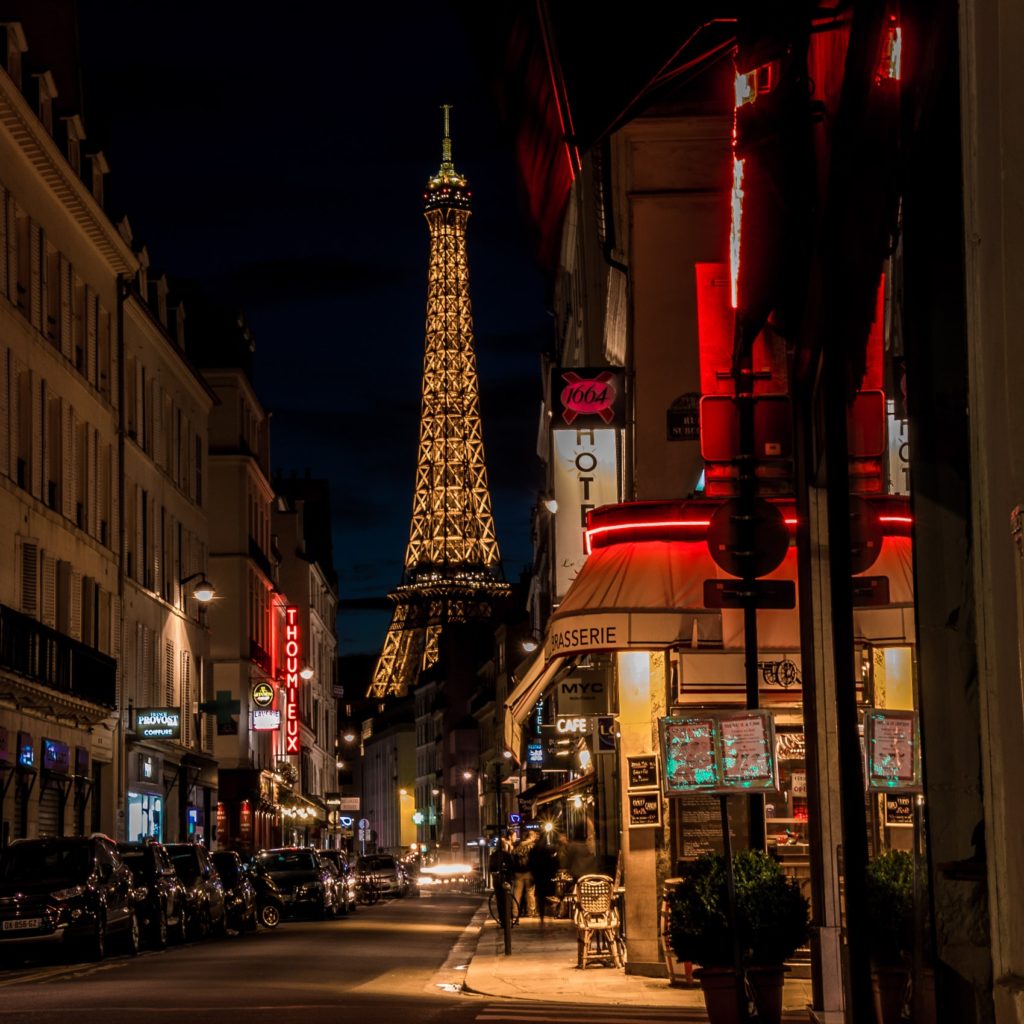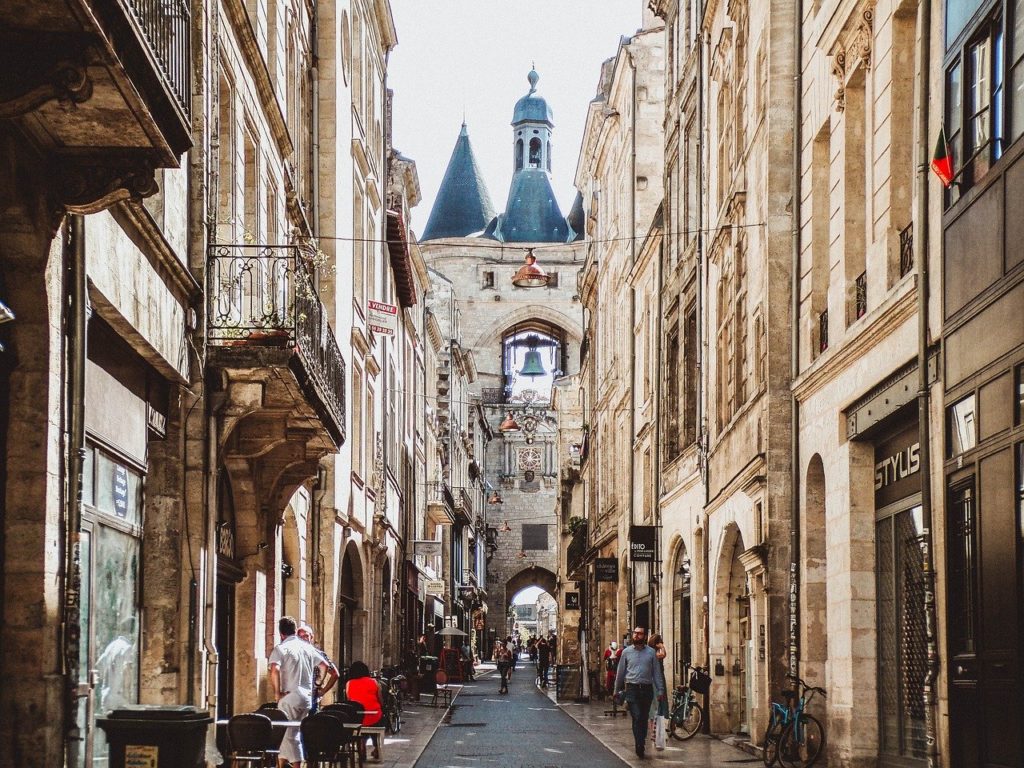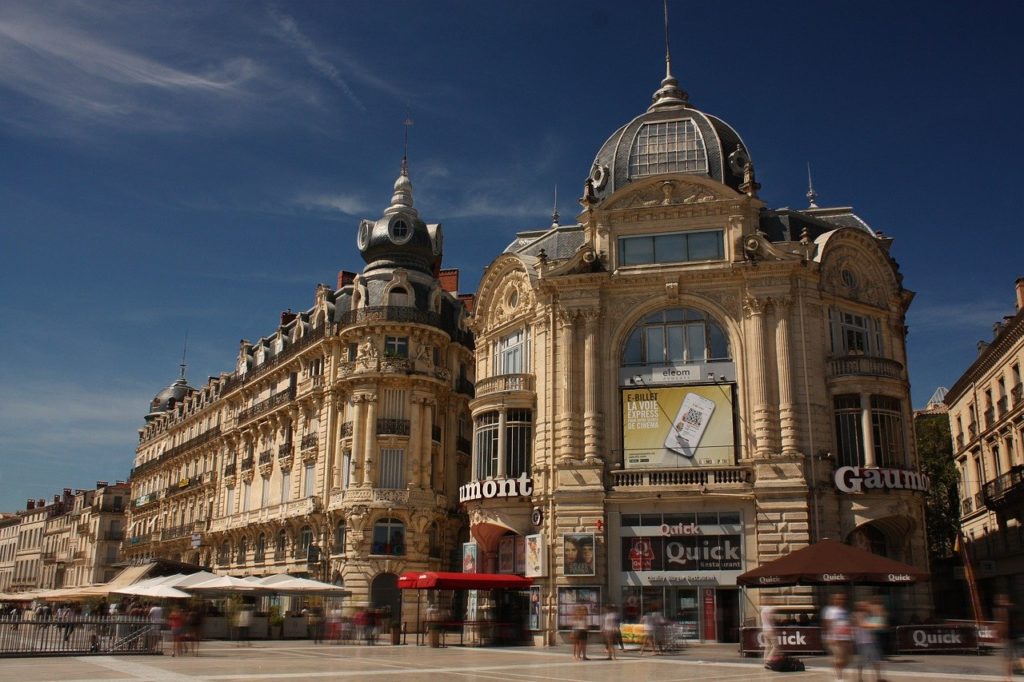Arnaud Schuffenecker, a proud Frenchman himself, takes us through his favourite spots around France. If you’d like to go interrailing in France, then follow Arnaud’s ultimate Interrail route around France with this Interrail route template.
Are you planning to go to France? “Cocorico.”
It’s the most visited tourist destination in the world, offering many varied landscapes and a rich cultural heritage. Thanks to its well-connected and high quality rail network, let yourself be tempted by an interrail around France. We propose to you a route from Paris to Marseille! On the list: a romantic dinner in Paris, a trip to the future in Poitiers, cheese and wine tasting in Bordeaux, surfing in Biarritz, a sunny day on the French Riviera and much more…
“Bon voyage!”
Paris, France

What could be better than to start our journey in the capital of love and fashion? Some say that it would take a lifetime to fully visit every alley and recess in the city of light. However, one weekend in Paris is enough to let you feel the famous Parisian flair. Not to be missed is the Louvre Museum (beware, it’s closed on Tuesdays) with its innumerable collections of paintings and sculptures – witnesses to our history. After the Louvre, walk along the avenue des Champs Elysées towards the Arc de Triomphe for a nice stroll. If you like shopping, head directly to the Galeries Lafayette, the capital’s largest fashion department store. Even if you don’t like shopping be sure to visit the store’s rooftop for an unbeatable view of Paris – it’s free!
After a beautiful walk along the River Seine, stop at the romantic restaurant “Le Colimaçon” for some traditional French cuisine at a fair price. Before leaving for Poitiers, taste the famous macaroons of “La Durée”, a tasty and well-kept secret recipe!
Poitiers, France
Just 90 minutes from Paris by train, Poitiers invites you on a trip to the heart of French history. Romanesque art is omnipresent in the city: civil and religious monuments, narrow alleys with half-timbered houses… a key building of this architectural testimony, the church of Notre-Dame-la-Grande and its facade with sculpted decoration. The Palace of the Counts of Poitou-ducs d’Aquitaine (which is today now a courthouse), located in the heart of the city, also recalls the period of the city’s domination from the 10th to the 12th century.
Baptised as the city with its 100 steeples, Poitiers does not rest on its laurels. The “Futuroscope” amusement park is resolutely forward-looking with impressive attractions featuring the latest technology. Don’t miss the most recent attraction: a trip around the world inspired by Jules Verne’s novel aboard an extraordinary machine – an incredible experience!
Bordeaux, France

Another 80 minutes on the train and you’ll arrive in Bordeaux, thanks to the TGV high-speed train (be sure to make seat reservations). During the journey to the south of France, take a look at the many wine vineyards that make Bordeaux famous all over the world. Named “the most trendy city in the world” in 2017 by Lonely Planet, Bordeaux is the city of today, combining architecture, culture, gastronomy and the art of living.
To begin your visit, go admire the famous water mirror – with an area of nearly 3500m², the largest in the world! Then head straight to the famous Place de la Comédie in the heart of town. Stop in front of the “Grand Théâtre”, built on the orders of Marshal de Richelieu and inaugurated in 1780, the Bordeaux theatre is considered to be one of the most beautiful in the world.
You should also visit the brand new “Cité du Vin”, opened in 2016, offering you an immersive and sensory journey, which is so very unique. To get there, walk along the freshly renovated quays along the Garonne River. Along the way, you’ll see some buildings that are classified as UNESCO World Heritage Sites.
For dinner, we recommend the “Bistrot d’ Aurélie” or the “Au Bistrot ” – excellent prices for tasty, gastronomic French food. Before leaving for Biarritz, try the famous “cannelés”, flavoured with rum and vanilla.
Biarritz, France

Between ocean and mountains, very close to the Basque Country and close to Spain, the city of Biarritz is ideal for excursions. It is also well known for being the European capital of surfing, with significant waves all year round. The surfing culture can be seen throughout the city, particularly represented by the “Cité de l’ Océan” and the number of surf shops/surfboard rental companies in the area. If you’ve never surfed before, you’ve come to the right place (there are 18 surf schools!). In Biarritz, 6 beaches are waiting for you, each with their own charm. The best known and most appreciated by surfers is the beach “de la côte des Basques”.
If surfing is not your cup of tea, take a look at the very typical architecture of the old houses in the city centre. Take advantage of this opportunity to visit the famous “Halles de Biarritz”, home to more than 120 merchants. You will discover local gastronomy such as “le gâteau Basque” or “le jambon de Bayonne”.
For accommodation, we recommend the “youth hostel HI Biarritz”, a very nice and friendly place. Now, en route to Toulouse!
Toulouse, France
Welcome to the capital of southwestern France! Toulouse is a colourful city with its pink brick facades and its emblematic flower, the Violet. Halfway between the Mediterranean Sea and the Atlantic Ocean, the “Pink City”, as it is called, merges heritage and “art de vivre” joyfully. Start your visit at the “la place du Capitole”, a pedestrian-friendly open space in the historic city centre. With a surface area of more than 12,000 m², as big as two football pitches! For some neoclassical architecture, the Capitole houses Toulouse’s town hall (free visit), as well as a theatre and a national orchestra are worth a visit. Not far from the square is The Jacobins Monastery. Built from the 13th century onwards, the Jacobins Monastery is a magnificent Gothic religious building, known for housing the relics of St. Thomas Aquinas.
Food wise, the city centre is full of excellent restaurants where you can taste the local traditional cuisine: duck, “foie gras”, or “cassoulet”. Be careful, the food is delicious, but also a bit heavy! Don’t forget to also take a night time stroll along the banks of the Garonne River.
Finally, if you are interested in aeronautics, visit the City of Space to jump on the moon – in 3D! It is now time to get on the train to Montpellier.
Montpellier, France

After 2 hours and 20 minutes by train, you will arrive in Montpellier. This city, close to the Mediterranean Sea, seduces both students and lovers of unusual streets and nightlife. Montpellier is, during any season, the most attractive city in the south of France. The climate is pleasant all year round. Montpellier’s historic centre, rich in a millennial history, stands out thanks to its cobbled pedestrian streets, original concept stores and various restaurants.
The “Place de la Comédie” will inevitably attract your attention. Completely pedestrian, the place is full of terraces that allow you to enjoy a coffee or an aperitif while contemplating the famous opera Comédie, inspired by the Garnier Opera House in Paris. If you have time, explore the historic area of the Ecusson as well. The best way to experience the medieval streets of Montpellier is to leave your map in your pocket and let your curiosity be your guide. Also admire the Arc de Triomphe. This 15-metre monument, which forms the gateway to the old town of Montpellier, was built in 1691 in honour of Louis XIV. Before heading to Marseille, have one of the famous cocktails at “Papa Doble,” then enjoy a tasty burger at “Burger et Blanquette”.
Marseille, France

The last stop on our journey is the mythical city of Marseille, known all over the world for its football team, Olympique de Marseille. To start, go to the old port of Marseille and sit down in one of the many bars to enjoy the pastis, the city’s traditional alcoholic beverage. While relaxing with a drink in hand, look up and watch the lively port that never sleeps, where sailors, locals and tourists are constantly crossing paths. Then explore Marseille’s trendiest neighbourhood, “le quartier du Panier”, founded 2,600 years ago by the Greeks. Today, the neighbourhood is a landmark for artists, thanks to the presence of numerous art galleries.
Food-lovers will also be pleased with the incredible gastronomy in the district. Last but not least, hipsters will also be delighted with all the vintage boutiques. Looking for a place to take the perfect Instagram photo? Climb up to the Basilica of Notre-Dame-de-la-Garde (but, plan for a good hour of walking). When you’re at the top, you’ll be rewarded with a great view over the city under the radiant sunshine.
And so, our Interrail trip ends, “au revoir la France”!
If you’d like to follow Arnaud’s ultimate Interrail route around France, you can get started with this Interrail route template.
Want to spend a few more days in France and explore other places?
Arnaud recommends visiting Saint-Tropez, Cannes, and Nice with its famous “promenade des anglais”. These three cities make the French Riviera renowned all over the world.
